We got a chance to experience the Simple Energy One before deliveries began and here is what we have to say.
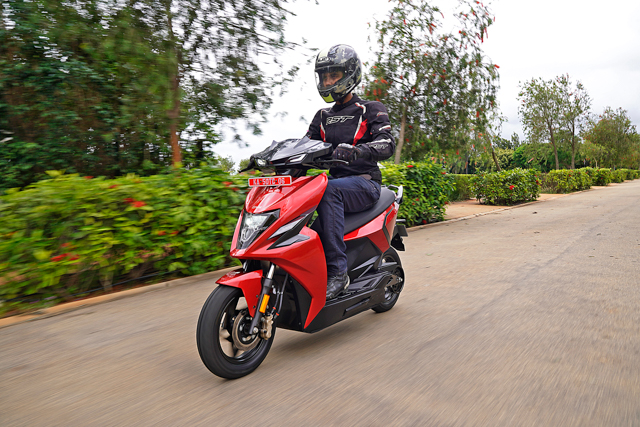
Story: Joshua Varghese
Photography: Sanjay Raikar
Simple Energy made a lot of noise in August 2021 when they revealed the One. It was a scooter that promised a range of 200-plus km along with performance that rivalled 150-cc combustion-engine motorcycles at a price that was tempting enough to consider ditching petrol for batteries. What was there to not like about it? Almost a year later, they have amassed more than 60,000 bookings and are mere weeks away from rolling the scooter out to customers. We were invited to have a go and predictably, the venue was Bengaluru which is now becoming a hub for EV start-ups in India.
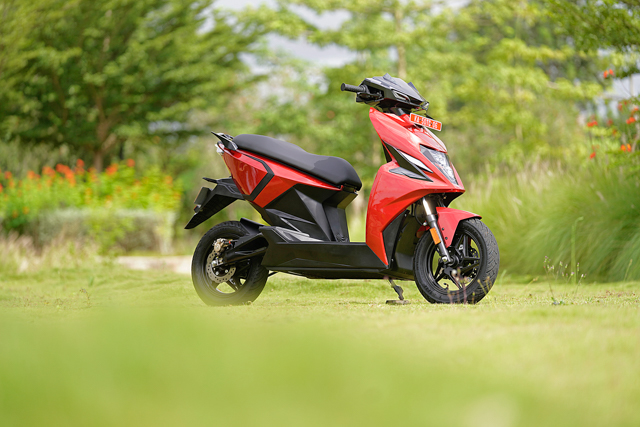
We were given a fairly large area of private property to test the One and that explains the lack of mirrors on our test unit. The ‘Simple people’ are an enthusiastic bunch and during my interaction with the lead designer I was told that the One was not designed to be aggressive or intimidating. It needed to have a sporty form that complemented its function and so they drew inspiration from a bird, the Indian Paradise Flycatcher, to be precise. Just like the bird does not have anything that is not functional, the Simple One has also kept frills to a bare minimum and the effects of its frugal diet are evident from every angle. The combination of the exposed swingarm, belt and pulley further amplify the One’s sporty stance.
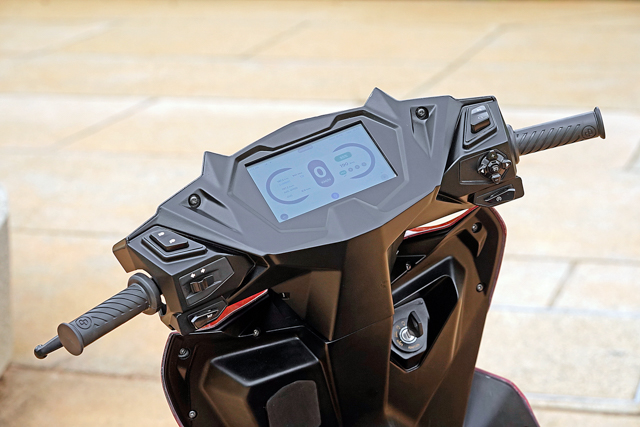
The instrument console is essentially a touchscreen tablet and there are all the essentials that one would expect to find in such a product. Funky animations, colour-themed screens for riding modes, a digital locker for documents, readouts for range and state of charge are among the most useful features in its arsenal. The display is easy to read in most conditions and considering how even smartphone screens are difficult to view sometimes, it is not worth complaining about. Although most functions are available by tapping or swiping on the screen, the buttons are indispensable and there is a lot of improvement needed there. While they are tactile and functional, one would expect higher quality of materials here, especially when Simple are using European standards (quite commendable, by the way) as a benchmark for the One.
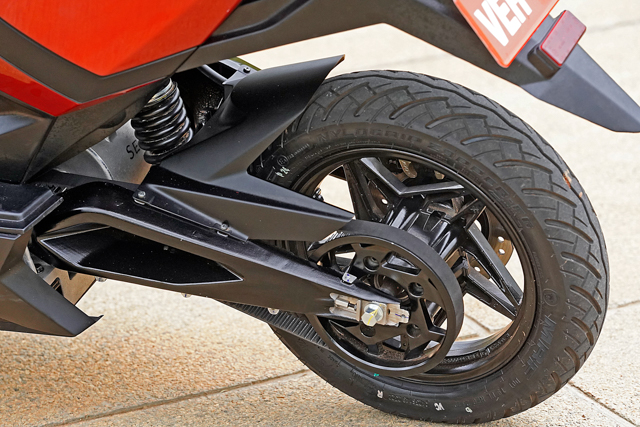
Just above the swingarm mount sits the 8.5-kW (peak) motor that relays motive force to the rear wheel using a belt and pulley. With a claimed range of 200-plus km, this thing needs serious battery power and the One draws on a combined capacity of 4.8 kWh, combined being the key word. A 3.3-kWh fixed battery pack sits under the floorboard while a 1.5-kWh unit is placed under the seat. The latter is removable and provides up to 60 km of range by itself. That is particularly useful if you need to get some juice in a place where there are no charging options. On a proper charger, the scooter charges from zero to 80 per cent in under two hours. Since we are on the topic of batteries, let’s address the question that everyone will eventually ask ‘Will it catch fire?’ When presented with this query, the Simple people assured us that the One’s thermal management is optimized to ensure that the battery or motor never reaches critical temperatures. Even if it does, they said that each cell is separated by flame-retardant material that will localize the damage to one cell and significantly minimize the risk of a thermal runaway (i.e explosion). Furthermore, they also said that the battery management system will alert the rider as soon as it detects an anomaly in the battery pack. Of course, we are yet to verify these claims but we had zero temperature-related issues during our time with the scooter.
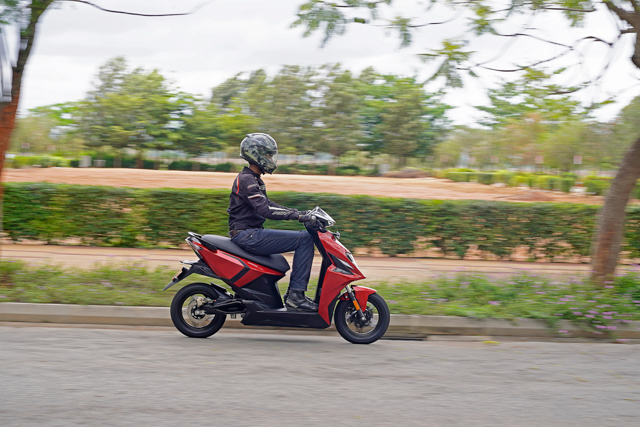
As a tall person, I am somewhat skeptical about riding slender scooters with thin wedges for seats. The usual problems include knees touching the handlebar while making a U-turn and a general discomfort while scooting about. On that front, the Simple One has a deceptively comfortable seat but seating two full-size adults could be a bit of a squeeze. Sure, the handlebar touched the knees at maximum lock but it does not require a full lock to execute a tight U-turn and that should bolster its capabilities as an urban runabout.
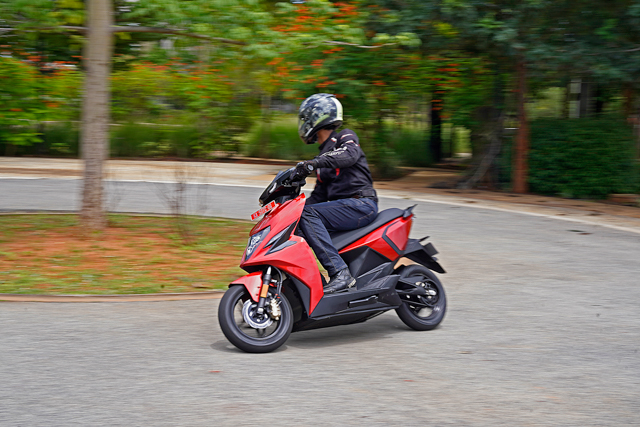
My ride experience began with the conservative Eco mode and soon progressed through Ride, Dash and Sonic. The throttle calibration was nicely done for each mode because they all lived up to expectations beautifully. Eco and Ride are good enough for everyday use without worrying about range anxiety while Sonic unlocks the full potential of the scooter for some properly thrilling acceleration at the expense of charge. Dash mode was my favourite of the lot because it was the most enjoyable in the corners with its linear and progressive response. Simple have not gone overboard with the whole sporty intent and have given this scooter a sensible suspension set-up. The telescopic fork at the front and the monoshock at the rear provide a good range of travel that soaks up bumps and holds the road nicely when carrying speed through corners. Simple had also set up a slalom course to showcase the scooter’s handling capabilities and there also it impressed with its agility. In Sonic mode, the One accelerates violently (for a scooter) and even reaches speeds in the vicinity of 100 km/h with its claimed 0-40 km/h in 2.77 seconds seeming fairly reasonable.
Braking equipment on this scooter includes disc brakes at either end with a three-piston caliper in the front and single-piston unit at the rear along with the safety of combined braking system. The bite is potent and the feedback provides the confidence to brake hard with the scooter slowing down in a planted and composed manner with ample grip from the MRF tyres. Interestingly, it also revealed a lot of play in the steering column but Simple Energy have assured that they will have that sorted out in the production models.
If the production model arrives with the promised improvements, then the Simple One is an extremely convincing product. We are yet to verify the range claim but even otherwise, it is easy to want one of these after a small test ride. At Rs 1.10 lakh (ex-showroom), it is currently priced well when compared to its rivals but this is only an introductory price. For a first product, Simple Energy have managed to develop and manufacture a sophisticated electric scooter that is straightforward and simple to use, and that I believe is what will make this choice a simple one for most.
Read more: Ather 450X – Gen 3 First Ride Review

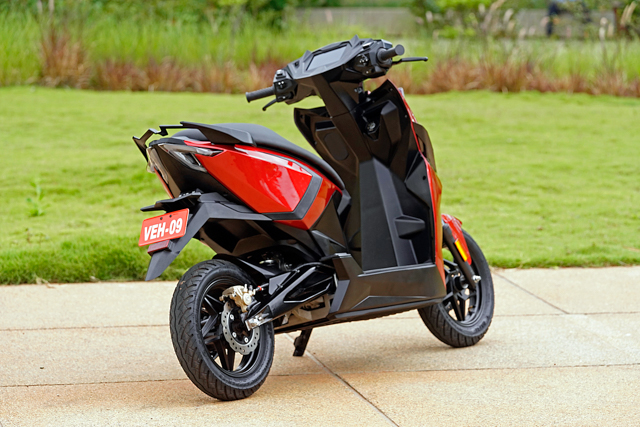
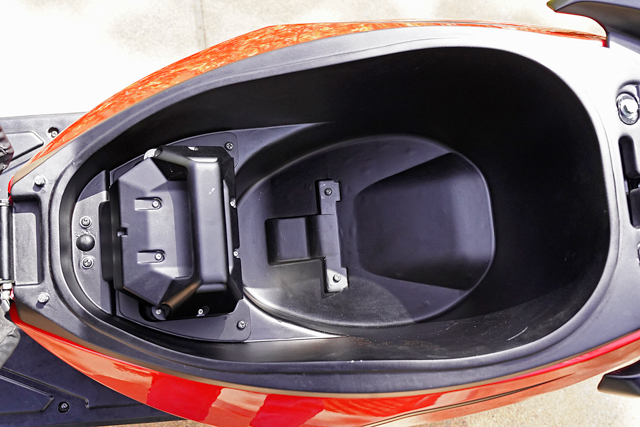

Leave a Reply